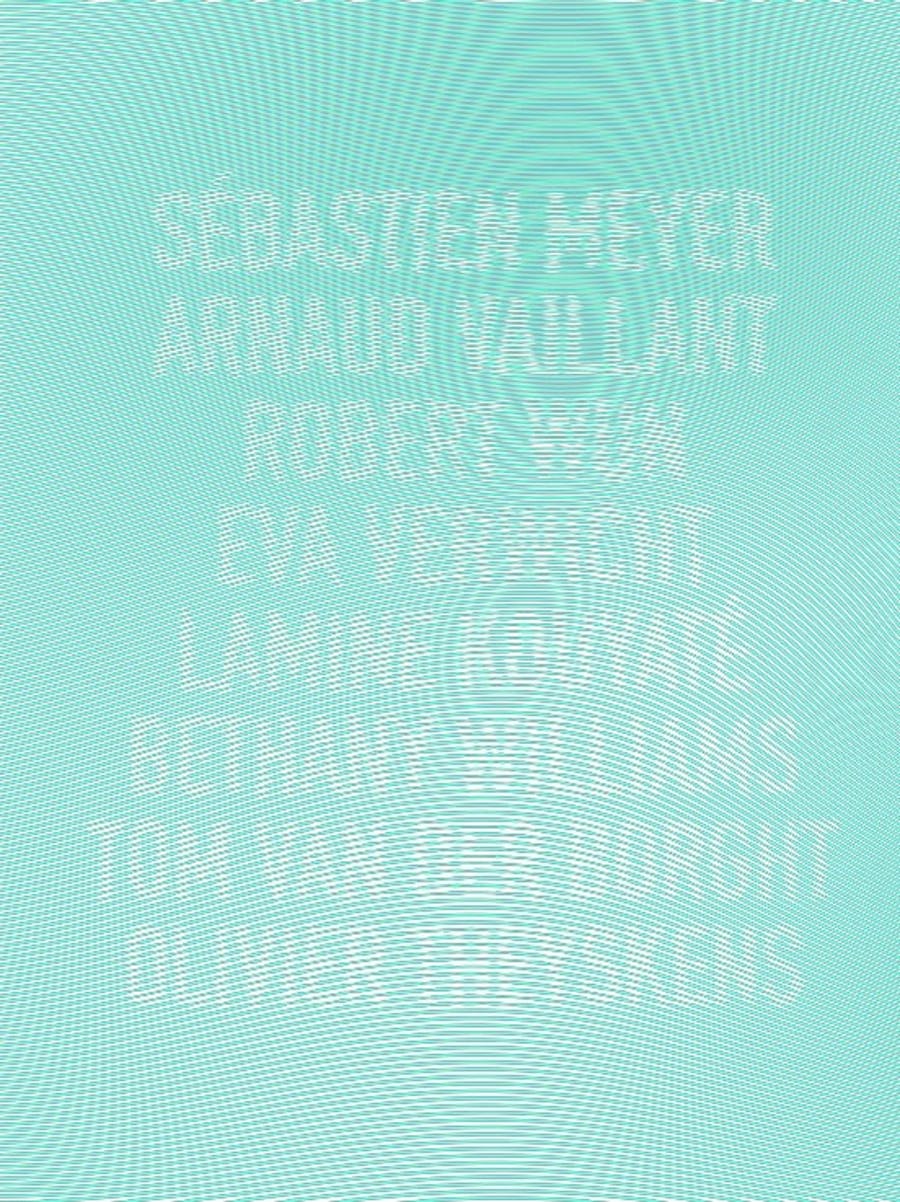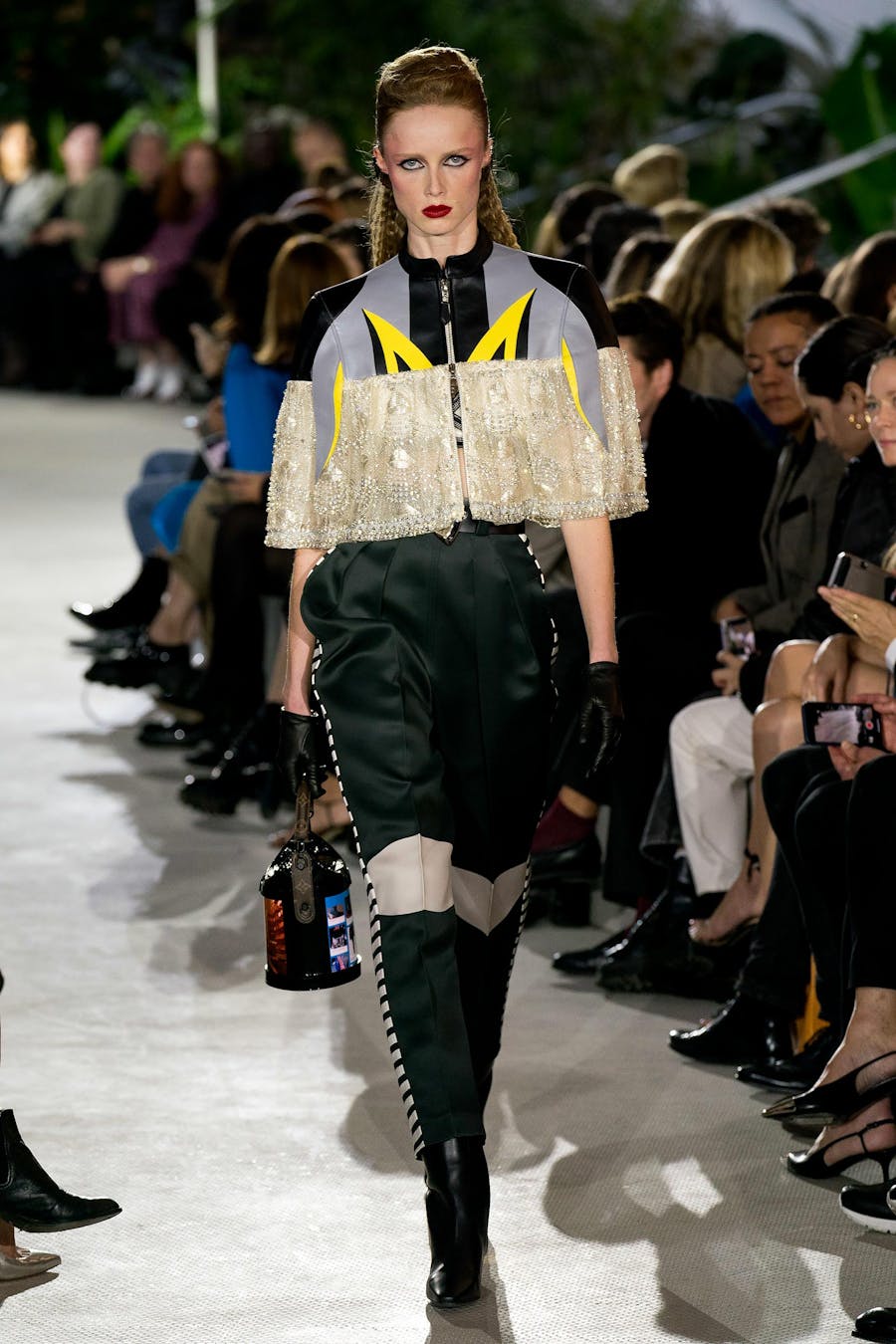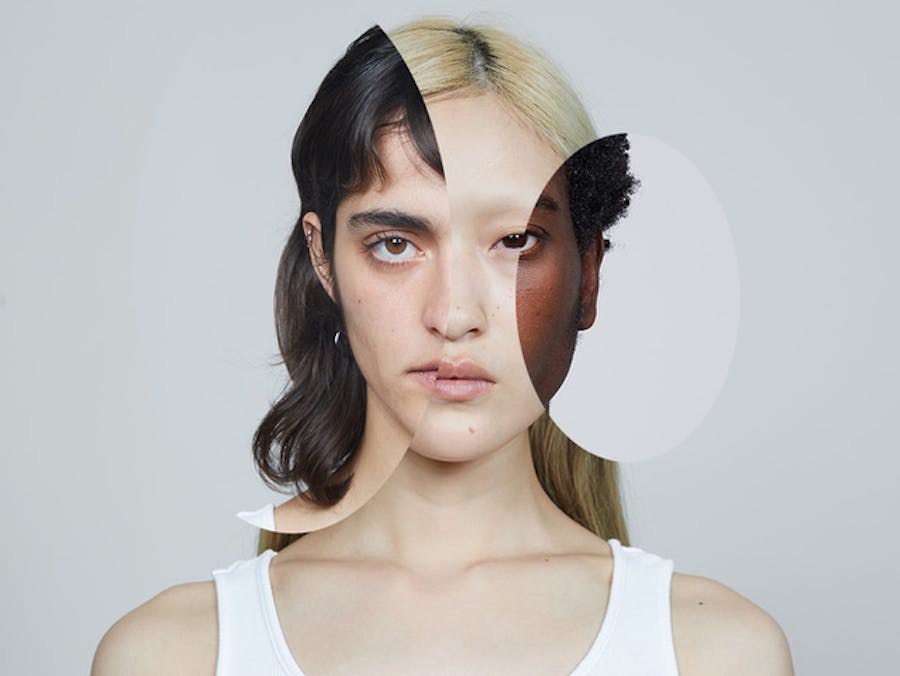‘Must we always limit ourselves to alarmist, pessimistic visions of the future ? Could we not instead help people to construct positive imaginings, to invent other possible worlds, desirable futures ? Collapsology, dystopias – that’s all too easy! As is utopia by the way,’ says Julien Tauvel, head of future studies institute Imprudence which he founded with Gérald Obringer three years ago. Their mission? To fight against the poverty of futurist and technological imaginings. Their premise? In an ever-accelerating world where predictions have become obsolete, the future can no longer be deduced, it can only be imagined. No crystal balls, no tarot readings – too risky. Their weapon of choice? Narratives, in their parlance, ‘of forecasting through design fiction!’ ‘If you want to question what is currently unfolding, there is no medium more powerful’, he says. An Anglo-Saxon discipline created by Bruce Sterling and ‘popularized’ by Dunne and Raby, design fiction has, as of yet, few followers in France. Except, of course, the well-known Nicolas Nova. At Imprudence HQ, you’ll find : IT creatives, authors, illustrators, designers and software developers who are busy working on our future, always with an eye on avant-garde experimentation and the work of speculative designers. Imprudence operates as much in the worlds of beauty, fashion and perfume as agri-business and transport. They’ve got plenty of work and plenty of questions... Are algorithms going to make our decisions for us ? Are we all going to be graded for our behaviour ? Are we going to be able to talk to the dead ? Are robots going to develop emotions ? And will our avatars ?
Do you consider our digital doubles – constructed on the basis of the traces we leave on social networks – as a form of avatar ?
We leave two different kinds of trace. The first concerns all the elements that we post voluntarily on social networks to construct our personality – what we call our digital twin or digital double. But we often forget the other side of the coin: what we post involuntarily, unconsciously. If we were to analyse all the traces left by the people who post on Instagram and we made avatars of them, would it really resemble them ? It would be a flattering, consensual version of them. The question is worth asking. Online we voluntarily expose one side of ourselves, a construct, but we also leave our shadow...
Like people who post photos of their dearly departed as a tribute... Would they talk about them in real life ?
The platform is pushing us towards shortcuts because of its reduced vocabulary. Social networks lead us to construct rather thin doubles. Each network expresses one basic facet of ourselves. In other words, on Instagram I want to be flawlessly beautiful, on Facebook I want to moan... A like, a heart, is not the same thing as a conversation. This digital double is really an extreme, impo- verished version of myself, both voluntary and unconcious.
There is a lot of investment in the development of virtual environments and avatars (moving beyond something like Zepeto). How do you imagine the mainstream future of the virtual avatar ? Are we all going to have a virtual double we can send to the other side of world ?
Video games and fashion (at least the major retailers) were the first to model avatars. In a video game, you construct an avatar to be different from yourself. On e-commerce platforms there is a process known as ‘body scanning’, which is a reproduction of yourself. That’s what apps like Nettelo or Zozosuit offer (a Japanese jumpsuit covered with sensors which capture your physical measurements in about 400 places – bearing in mind a traditional tailor only takes 30 or so - to create a piece as close as possible to one’s morphology). That’s all quite straightforward...
But last year Epic Games (Ed.: a North Carolina-based video game developer and subsidiary of the Chinese internet giant Tencent) took it up a notch by presenting the future of its game engine Unreal Engine in the guise of the avatar SIREN – a show of strength. The developer has set up a system capable of creating in real time a virtual image of a human being, with motion capture technology realistically reproducing the movements of the body and facial expressions. In five years time, we could certainly each have an avatar, in the sense of a virtual 3D representation that is faithful to our original self. The avatar is a body and whatever animates it. But what is going to animate it ? Myself or artificial intelligence ? There are fascinating, intriguing, even worrying things happening in this area. For example, last year the Chinese company ObEN established a partnership with the Shanghai-based C-pop group SNH48 to imagine portable avatars. They produced an avatar of each member of the group and modelled artifical intelligence pro- grammed according to their habitual responses. The future ? That everyone can have in their pocket their group of friends in avatar form, that everyone can use the avatars of other people, of their friends, even of their favourite stars... To have Kim Kardashian with you all the time... A kind of modern Tamagotchi: an entire world within reach, in your phone.
So your avatar would need to have a body ...
No, you can have an avatar without a body. That’s the principle of the application IOS Replika... a replica of you that learns from you. The aim is to be able to then ask it: what would I say if I were more introverted or more passionate ? To simulate other reactions we might have. The simulation of the self and its behaviour is a key idea in the future of the avatar.
Then we won’t necessarily be able to control the emotions of our avatars ?
That brings to mind that Nintendo experiment, which never got off the ground but was very cutting-edge. A mobile app called Mitomo which allowed you to create an avatar. At night, when the user wasn’t playing, the avatar was interacting with others... It could go and insult another avatar, for example! In five to ten years, artificial intelligence will understand us, not in our individuality but the broad outlines. Characters modelled according to our desires will be partially controlled by a machine. But where will they deve- lop ? In a virtual world, on social networks, or just for me, on my phone. What link will I have with them ? Will I feel affection for them ? Will I distrust them (and end up locking them in an attic like in that episode of Black Mirror)? When we start to be able to really interact with our avatars, when they start to respond to us, that’s going to create major cognitive dissonance, and that will be very interesting to observe...
The spread of avatars has provoked polarized reactions. On the one hand, we have the techno-enthusiasts (who greet the possibility of living several lives in parallel worlds with optimism). On the other, there are the techno-apoca- lyptics (who fear loss of identity, despondency and aliena- tion). How do you respond to those fears ?
I understand them of course... Faced with technology, there are two main responses: excessive optimism (‘technology will save us’) or conservativism(‘it is going to destroy us!’). Gilbert Simondon used to say that technology is a basic tool, it’s nature. It is created by men, it surrounds us and it determines our relationship to the soil, to the other. We cannot say that the real/virtual mix in which we live is not naturally human, therefore we have to accept it. Nor can we say that technology is cold, since behind it there are humans. Our reality is now multi-level: real, virtual... there are doubtless other ‘levels’ which we have not yet accessed and which we still don’t know about. Given all that we have to ask ourselves: what do we do with technology ? Can we make it a tool of diversity, of representivity, or of standardization ? Anything is possible... Now more than ever we need artists to determine a new horizon. In your question, there is the word ‘alienation’; that’s interesting. An alien is someone different from myself, radically other. The avatar is me. It allows me to ask myself: why do I want it this way, why have I created it in this way ? That doesn’t lead to a loss of identity but rather to a questioning of it. It’s good to ask ourselves at this moment in time, in a world which tends to ‘force’ identities on us.
In China, citizens are already graded, facial recognition software is used at universities, and school uniforms have GPS in them... Do you think that Europe is going to follow China down that road ?
It’s a bit like the principle of the panopticon: I’ve got nothing to hide and I surveille the other. In France, we are in the pro- cess of installing a similar system of CCTV cameras... Then there are also the ‘helicoper parents’ who track their children through their mobile and GPS because they’re scared something will happen to them. There is a balance to be found between managing risk and comfort... Looking for comfort leads to a loss of liberty and liberty can do without comfort. Without friction, without contact, our society becomes automated, robotic. It is the role of artists, of designers, of urbanists to refuse that, to restore granularity and friction to our daily interactions. Forced optimization excludes a kind of chaos that is useful for society. Every year Bruce Sterling produces his state of the world report, and in 2018 he said: we’re wit- nessing the end of progress, people no longer see a tangible horizon, a new one has to be reconstructed. Of course, that’s a bit scary... New technologies are a new third estate! And we’ve reached a crossroads: we can move either towards generalized surveillance or towards the liberation of human potential. Artificial intelligence has in-built biases against which we have to struggle.
But these major questions are almost entirely absent from public debate...
It’s true... Because we lack imagination, we have difficulty creating new stories and we easily fall back on dystopian universes. That’s the easy option. We find it very difficult to project oursel- ves; our reactions are short-termist. Silicon Valley has a vision of the world, China does too with its 2049 plan, a horizon and a dream. In Europe, postmodernity has deconstructed all narratives and it is time to reconstruct collaborative, participatory narratives. We have to start working on it now!
Could avatars be the bearers of a new imagination ?
Avatars can, it is true, allow new, positive narratives to open up, but to date they have very little imagination. If you read their ‘biography’, there is very little there... At the end of 2018 the first French virtual influencer, Gaia, was launched. It’s important she not just fall back on the cliches around french influencers, but that she paves the way...
Indeed, recently a number of virtual influencers have appeared, such as Lil Miquela, Blawko, Noonoouri, but they are developing in a very conformist way. Are we yet to see the emergence of the countercultural virtual influencer, challenging idealized representations of the self ?
Noonoouri remains quite bland, because she is based on Japanese Kawaii archetypes. She holds most sway in China, notably in Alibaba’s Luxury Pavillion (fake 3D shops). Lil Miquela represents the fembot and Shudu Gram is the model of colour. But the founder of the latter, the photographer Cameron- James Wilson, recently created a much more alien avatar, comple- tely crazy: @galaxia.gram and a plus-size black model @brenn. gram. We’re moving towards something a little less bland. But all of this is moving in step with the evolution of fashion... And fashion is never the first to exploit these technologies. Overall, its use of the avatar is very mainstream but brands such as CARLINGS or THE FABRICANT create digital clothes and are really pushing the envelope: how can we use the virtual as a new expressive form ? They are challenging to the creativity of fashion houses who find it hard to tackle these questions. Nonetheless, sooner or later fashion will have to join the debate especially when spaces become virtual, like Facebook Spaces...
Do you think we are likely to see more and more avant-gar- dist and critical distortions of the real like in the work of Yilmaz Sen, Jon Rafman or performers whose medium is Instagram (@sarahnicolefrançois, @melovemealot) ?
Absolutely. Izzie Button has started selling stretch marks and wrinkles for Second Life avatars, LaTurbo Avedon uses the avatar to critique toxic masculinity and John Yuyi is exploring the blurring of the boundary between the virtual and the real in his own way. It is still only niche artists and brands that are playing with these ideas. Avatars today are representations of the ego and not representations of the self: that’s why art will have to take hold of the medium; radical artists can demonstrate its different facets and its limits. The new generation of artists will contest the stan- dardization of social networks because they know them like the back of their hand. We live in a system which expropriates bodies and identities to standardize them: social networks are the paragon of that, they treat the body as a product like any other. The avatar becomes interesting the moment you switch from the point of view of the consumer to the point of the view ‘maker’: rather than customizing the avatar, can I create one ? Rather than having someone sell me a particular body, can I invent one myself ? The avatar can become a way of reappropriating the body, a way of recreating an identity.
Between artitficial intelligence, biotechnology, augmented reality, new materials and neuroscience, what are the most exciting developments we can expect to see in the coming years in fashion and luxury ?
In a world that is developing exponentially, at an accelerated pace, it is impossible to make predictions... Here at Imprudence, we like to follow the work of speculative or critical designers; people who are inventing concepts, objects and products that will probably never exist, but which are here to imagine the future through the lens of the present. It seems to me that the most interesting thing is imagining the new functions of clothes. For example, the speculative designer Angela Mathis has created the project ‘Leaving garments!’ which presents clothes made from vegetable cellulose which adapt to the body, which move and which have the capacity to act as beauty treatments: the fashion-beauty- wellness tryptich converge. In the future, clothes will have an incal- culable number of functions... Adam Harvey has imagined a form of make-up which prevents you being detected by security came- ras as well as silver-threaded burkas which cannot be detected by drones... Behnaz Farahi has created second skin clothing, endowed with a sixth sense which reacts when the wearer is being watched. Maria Castellanos has imagined clothing which creates oxygen.... Ali Schachtschneider has upped the ante: she imagines bacteria which you put on yourself, which grow and after two months they cover your body and you can eat them! What all these innovations have in common is that they raise questions about the body, about the relationship between the self and the other, and the self and the environment which are interesting. Clothing is not merely trivial: I would like to see fashion harness technology to become more radical, so that it can ask a wider set of questions.
Translated into English by Sara & Emma Bielecki




